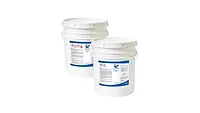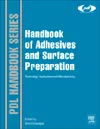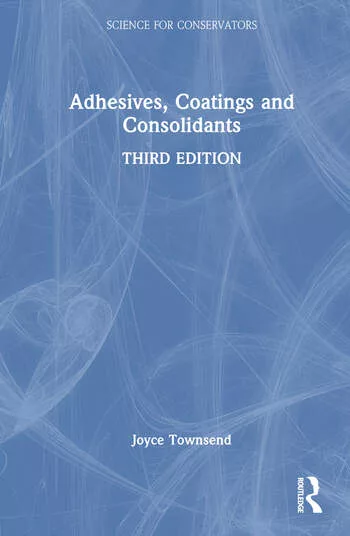Methyl Methacrylate Adhesives for Architectural PVC
PVC is a new mainstream material for residential and commercial building.

 In the early 1900s, rough-sawn pine gave way to mill-cut and then planer-finished dimensional lumber. Since then, constant improvements in milling and planning capabilities have resulted in better quality and more accurate lumber. Within the last few decades, computer-controlled contour milling, routing, and profiling have provided more sophisticated wood shops with the ability to make simple or highly complex and ornate “carvings.”
In the early 1900s, rough-sawn pine gave way to mill-cut and then planer-finished dimensional lumber. Since then, constant improvements in milling and planning capabilities have resulted in better quality and more accurate lumber. Within the last few decades, computer-controlled contour milling, routing, and profiling have provided more sophisticated wood shops with the ability to make simple or highly complex and ornate “carvings.”
However, many of the inherent shortcomings of that original rough-sawn plank have remained. The most obvious and frequent is a high level of required maintenance, both to preserve the wood and protect its appearance. Much of this is related to the “sponge effect”-simply put, wood absorbs moisture. As the wood dries, its density and dimensions change considerably. Seasonal or even more frequent wet and dry cycles lead to a multitude of problems, not the least of which is rot and peeling paint. All exposed wood requires frequent attention.
Enter polyvinyl chloride (PVC). At first thought, PVC is not a likely substitute for wood, but a little background information will help explain why it is a new mainstream material for residential and commercial building.
The first commercial processing of PVC pipe occurred in Germany in the 1930s through the process of intermittent ram extrusion. Although somewhat crude, PVC pipe from this process was installed in several German cities and, as a testament to the durability of PVC, much of it is still in use today. In 1950, continuous PVC extrusion was demonstrated as a practical process that introduced a host of product possibilities. Of the 47.5 million tons of PVC produced in 2010, nearly 40% is still used to make pipe and fittings.
The development of expanded or cellular PVC began in Europe in the early 1960s. It was first manufactured by what is known as a free-foam extrusion process. In this process, granulated PVC containing a heat-activated blowing or expansion agent to create an internal gas-filled cell structure was melted and forced through a slot die to form a sheet of controlled dimensions.
In 1989, a European development known as the Celuka process was perfected. The process involved continuous cooling of the downstream extrusion die surface to form a tough and more solid skin. Extruded trim and moldings made using Celuka technology are structurally stronger and more dimensionally accurate than products made with free foam.
PVC trim and sheet manufacturers in the U.S. use either one process or the other. Each process provides excellent wood replacements for trim, molding and siding applications. Residential and commercial decking is a newer and already successful application for cellular PVC, offering product so closely resembling wood in color and texture that it is difficult to see or even feel the difference.
Each cellular PVC manufacturer uses proprietary polymer blends of PVC, which may include high-purity pigments for color retention, UV stabilizers to guard against sun damage, and tougheners to enhance strength. Some PVC is coextruded with another surfacing resin to provide gloss, color or scuff resistance. Post-processing may be involved as well to texture the finish. The bottom line is that this PVC looks, feels, paints and cuts like wood. The builder or contractor is faced with far fewer difficulties, and the homeowner is saddled with far less maintenance.
Cellular PVC is strong, durable, lightweight and easy to install with traditional building techniques. It is also non-toxic, recyclable and self-extinguishing. It will not rot, warp, delaminate, cup, or twist and is impervious to salts, insects, and many chemicals (including some acids). Cellular PVC cuts, routs, and fastens just like wood, and it has a density similar to white pine. In addition, cellular PVC takes paint beautifully; the paint can truly last “a lifetime” since no moisture is behind it.

Imagine being able to cut a series of notches halfway through a wood board. By definition, the rotating cutters will leave a radius. An option would be to cut the notches all the way through one board and then fasten it to another of a similar size with nails (or screws) and glue. This would still result in two pieces, with a visible seam in the wood grain. These pieces could still warp and would certainly be subject to rot and peeling paint.
With cellular PVC and a true structural adhesive, those two boards become one piece. In addition, they do so after the milling and sanding is complete so all finishes and dimensions are perfect. The use of structural adhesives to bond and laminate pre-machined PVC segments means that profiles and shapes that were never before possible are now a reality. Individual components can be cut and milled prior to lamination or assembly and then bonded to become a single architectural piece.
The pieces shown at the beginning of this article are exterior trim pieces (inner and outer corners shown inverted for assembly in the shop) that were copied from an original design for the restoration of a New England Federalist period building. The pieces comprise laminated sections and milled or profiled cellular PVC lumber. With the use of structural methyl methacrylate adhesives, they have effectively become single pieces of cellular PVC.
Some PVC fabricators use PVC-clad structural members to stabilize and strengthen their PVC shapes. This allows the use of cellular PVC in longer spans and when required strengths must be achieved, such as in applications like railings. These are typically aluminum extrusions bedded in methyl methacrylate adhesives. The fabrication and installation of cellular PVC has always involved adhesives, caulks or sealants. Initially, traditional wood adhesives and caulks, and even conventional PVC solvent cements, were used-with generally less-than-satisfactory results.
PVC adhesives have traditionally been defined as solvent-based adhesives. Blends of highly volatile tetrahydrofuran, methyl ethyl ketone and other solvents are used to soften and dissolve the surface of the PVC, which in turn lubricates the assembly process and provides PVC pipe with a relatively quick handling strength. Pipe joint configuration maintains a tightly controlled bond line with a limited contact area and is designed to maximize the properties of low-viscosity solvent adhesives, which are not optimum for bonding flat cellular PVC sheets and boards.
Although solvent cements can work well on cellular PVC fabrications, job site conditions are not always appropriate to strong and lasting bonds. High-viscosity solvent cements for cellular PVC have high titanium dioxide pigment loadings that allow a reasonably strong bond on skin-to-skin bonds but have such a detrimental effect on expanded PVC’s cellular core structure that they are not recommended. The cellular core is delicate and extremely sensitive to contact with solvents. Solvents expected to melt and join the PVC work quickly but remain trapped within the joint. That lingering contact damages the cellular structure and results in core-to-core bonds that are significantly weaker than the strength of the PVC.
The faster curing adhesives are designed to interact less with the cellular PVC core structure and actually reinforce core-to-core joints after curing. Their rapid cure speed contributes to better job site utilization, since bonded parts demonstrate significant strength in as little as 15 minutes. The viscosity and rheology are similar to mayonnaise. The adhesives are easy to spread and stay in the joint while curing. The slower curing products allow up to 25 minutes of positioning time for larger parts and work well on skin-to-skin bonds.
Both types provide a solution for sealing and bonding gaps in the finished PVC product, filling fastener holes, or creating fillets or blends between adjoining pieces. The laminating-grade products enable economical buildups of even large sheets, minimum bond lines, and curing within one hour so processing may continue.
The leading six cellular PVC suppliers in the U.S. account for over 95% of domestically produced cellular PVC. All of them recommend methyl methacrylate adhesives for their strength, durability and ease of use. Methyl methacrylate adhesives continue to lead the PVC installation market. As cellular PVC becomes a materials standard, so do the adhesive systems required to complete a quality installation or fabrication.
For more information, contact Extreme Adhesives, Inc. at 63 Epping Rd., Raymond, NH 03077; phone (603) 895-4028; fax (603) 895-6236; email contact@extremeadhesives.com; or visit www.extremeadhesives.com.
Editor’s note: Except where indicated, photos are courtesy of Shoreline Millwork, Somersworth, N.H.


However, many of the inherent shortcomings of that original rough-sawn plank have remained. The most obvious and frequent is a high level of required maintenance, both to preserve the wood and protect its appearance. Much of this is related to the “sponge effect”-simply put, wood absorbs moisture. As the wood dries, its density and dimensions change considerably. Seasonal or even more frequent wet and dry cycles lead to a multitude of problems, not the least of which is rot and peeling paint. All exposed wood requires frequent attention.
Enter polyvinyl chloride (PVC). At first thought, PVC is not a likely substitute for wood, but a little background information will help explain why it is a new mainstream material for residential and commercial building.
PVC History
In the early 1920s, a scientist seeking to develop a new adhesive stumbled onto PVC. Waldo Semon was intrigued with his finding and experimented by making golf balls and shoe heels out of the versatile material. Shower curtains, wire insulation and raincoats were among the earliest PVC products.The first commercial processing of PVC pipe occurred in Germany in the 1930s through the process of intermittent ram extrusion. Although somewhat crude, PVC pipe from this process was installed in several German cities and, as a testament to the durability of PVC, much of it is still in use today. In 1950, continuous PVC extrusion was demonstrated as a practical process that introduced a host of product possibilities. Of the 47.5 million tons of PVC produced in 2010, nearly 40% is still used to make pipe and fittings.
The development of expanded or cellular PVC began in Europe in the early 1960s. It was first manufactured by what is known as a free-foam extrusion process. In this process, granulated PVC containing a heat-activated blowing or expansion agent to create an internal gas-filled cell structure was melted and forced through a slot die to form a sheet of controlled dimensions.
In 1989, a European development known as the Celuka process was perfected. The process involved continuous cooling of the downstream extrusion die surface to form a tough and more solid skin. Extruded trim and moldings made using Celuka technology are structurally stronger and more dimensionally accurate than products made with free foam.
PVC trim and sheet manufacturers in the U.S. use either one process or the other. Each process provides excellent wood replacements for trim, molding and siding applications. Residential and commercial decking is a newer and already successful application for cellular PVC, offering product so closely resembling wood in color and texture that it is difficult to see or even feel the difference.
Each cellular PVC manufacturer uses proprietary polymer blends of PVC, which may include high-purity pigments for color retention, UV stabilizers to guard against sun damage, and tougheners to enhance strength. Some PVC is coextruded with another surfacing resin to provide gloss, color or scuff resistance. Post-processing may be involved as well to texture the finish. The bottom line is that this PVC looks, feels, paints and cuts like wood. The builder or contractor is faced with far fewer difficulties, and the homeowner is saddled with far less maintenance.
Cellular PVC is strong, durable, lightweight and easy to install with traditional building techniques. It is also non-toxic, recyclable and self-extinguishing. It will not rot, warp, delaminate, cup, or twist and is impervious to salts, insects, and many chemicals (including some acids). Cellular PVC cuts, routs, and fastens just like wood, and it has a density similar to white pine. In addition, cellular PVC takes paint beautifully; the paint can truly last “a lifetime” since no moisture is behind it.

The adhesives are easy to spread and stay in the joint while curing. (Photo courtesy of Extreme Adhesives, Inc.)
Incorporating Adhesives
PVC has attained broad acceptance in sheets, dimensional lumber, and trim form for renovation and new construction when a low- or zero-maintenance installation is desired. Almost any non-structural use of wood can be duplicated or even improved when made from cellular PVC. This is where adhesives enter the picture.Imagine being able to cut a series of notches halfway through a wood board. By definition, the rotating cutters will leave a radius. An option would be to cut the notches all the way through one board and then fasten it to another of a similar size with nails (or screws) and glue. This would still result in two pieces, with a visible seam in the wood grain. These pieces could still warp and would certainly be subject to rot and peeling paint.
With cellular PVC and a true structural adhesive, those two boards become one piece. In addition, they do so after the milling and sanding is complete so all finishes and dimensions are perfect. The use of structural adhesives to bond and laminate pre-machined PVC segments means that profiles and shapes that were never before possible are now a reality. Individual components can be cut and milled prior to lamination or assembly and then bonded to become a single architectural piece.
The pieces shown at the beginning of this article are exterior trim pieces (inner and outer corners shown inverted for assembly in the shop) that were copied from an original design for the restoration of a New England Federalist period building. The pieces comprise laminated sections and milled or profiled cellular PVC lumber. With the use of structural methyl methacrylate adhesives, they have effectively become single pieces of cellular PVC.
Some PVC fabricators use PVC-clad structural members to stabilize and strengthen their PVC shapes. This allows the use of cellular PVC in longer spans and when required strengths must be achieved, such as in applications like railings. These are typically aluminum extrusions bedded in methyl methacrylate adhesives. The fabrication and installation of cellular PVC has always involved adhesives, caulks or sealants. Initially, traditional wood adhesives and caulks, and even conventional PVC solvent cements, were used-with generally less-than-satisfactory results.
PVC adhesives have traditionally been defined as solvent-based adhesives. Blends of highly volatile tetrahydrofuran, methyl ethyl ketone and other solvents are used to soften and dissolve the surface of the PVC, which in turn lubricates the assembly process and provides PVC pipe with a relatively quick handling strength. Pipe joint configuration maintains a tightly controlled bond line with a limited contact area and is designed to maximize the properties of low-viscosity solvent adhesives, which are not optimum for bonding flat cellular PVC sheets and boards.
Although solvent cements can work well on cellular PVC fabrications, job site conditions are not always appropriate to strong and lasting bonds. High-viscosity solvent cements for cellular PVC have high titanium dioxide pigment loadings that allow a reasonably strong bond on skin-to-skin bonds but have such a detrimental effect on expanded PVC’s cellular core structure that they are not recommended. The cellular core is delicate and extremely sensitive to contact with solvents. Solvents expected to melt and join the PVC work quickly but remain trapped within the joint. That lingering contact damages the cellular structure and results in core-to-core bonds that are significantly weaker than the strength of the PVC.
Adhesive Benefits
A few cellular PVC and adhesive manufacturers are marketing a broad line of white, solvent-free, two-component methyl methacrylate-based adhesives specifically developed for white cellular PVC. Both fast- and slow-curing formulations are available, as well as low-viscosity laminating grades used exclusively for building large cross- sectional profiles.The faster curing adhesives are designed to interact less with the cellular PVC core structure and actually reinforce core-to-core joints after curing. Their rapid cure speed contributes to better job site utilization, since bonded parts demonstrate significant strength in as little as 15 minutes. The viscosity and rheology are similar to mayonnaise. The adhesives are easy to spread and stay in the joint while curing. The slower curing products allow up to 25 minutes of positioning time for larger parts and work well on skin-to-skin bonds.
Both types provide a solution for sealing and bonding gaps in the finished PVC product, filling fastener holes, or creating fillets or blends between adjoining pieces. The laminating-grade products enable economical buildups of even large sheets, minimum bond lines, and curing within one hour so processing may continue.
The leading six cellular PVC suppliers in the U.S. account for over 95% of domestically produced cellular PVC. All of them recommend methyl methacrylate adhesives for their strength, durability and ease of use. Methyl methacrylate adhesives continue to lead the PVC installation market. As cellular PVC becomes a materials standard, so do the adhesive systems required to complete a quality installation or fabrication.
For more information, contact Extreme Adhesives, Inc. at 63 Epping Rd., Raymond, NH 03077; phone (603) 895-4028; fax (603) 895-6236; email contact@extremeadhesives.com; or visit www.extremeadhesives.com.
Editor’s note: Except where indicated, photos are courtesy of Shoreline Millwork, Somersworth, N.H.
Links
Looking for a reprint of this article?
From high-res PDFs to custom plaques, order your copy today!






